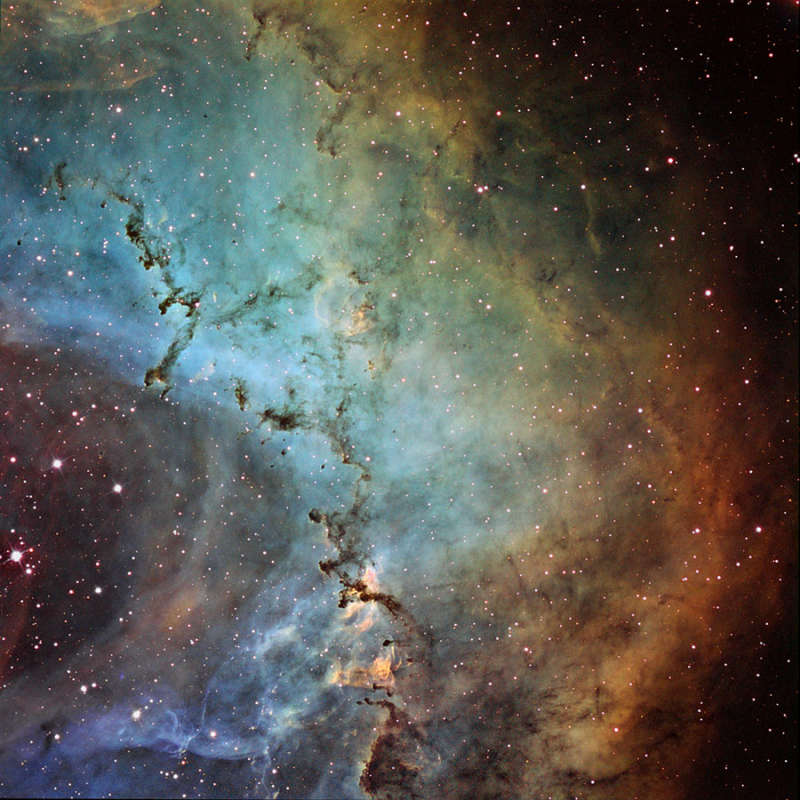Credit & Copyright: John Ebersole
Explanation:
What creates the cosmic dust sculptures in the Rosette Nebula?
Noted for the common beauty of its
overall shape, parts of the
Rosette Nebula, also known as
NGC 2237,
show beauty even when viewed up close.
Visible above are
globules of dark
dust and gas that are slowly being
eroded away by the energetic
light and winds by nearby massive stars.
Left alone long enough, the
molecular-cloud globules
would likely form stars and planets.
The above image was taken in very
specific colors of
Sulfur
(shaded red),
Hydrogen
(green), and
Oxygen (blue).
The Rosette Nebula spans about 50
light-years
across, lies
about 4,500 light-years away,
and can be seen with a small telescope towards the constellation of the
Unicorn (Monoceros).
New Mirror:
APOD now available in Arabic from Algeria
1999 2000 2001 2002 2003 2004 2005 2006 2007 2008 2009 2010 2011 2012 2013 2014 2015 2016 2017 2018 2019 2020 2021 2022 2023 2024 2025 |
Yanvar' Fevral' Mart Aprel' Mai Iyun' Iyul' Avgust Sentyabr' Oktyabr' Noyabr' Dekabr' |
NASA Web Site Statements, Warnings, and Disclaimers
NASA Official: Jay Norris. Specific rights apply.
A service of: LHEA at NASA / GSFC
& Michigan Tech. U.
|
Publikacii s klyuchevymi slovami:
Rosette Nebula - NGC 2237 - Tumannost' Rozetka
Publikacii so slovami: Rosette Nebula - NGC 2237 - Tumannost' Rozetka | |
Sm. takzhe:
Vse publikacii na tu zhe temu >> | |
